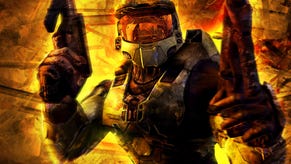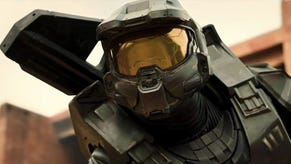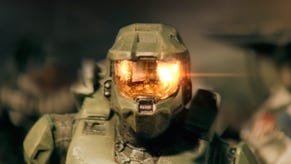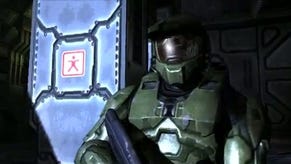Better Than Halo: The Making of Halo 2
As Microsoft prepares to switch off Xbox 1, Bungie reveals the painful birth of the game that defined Xbox Live.
"We were building stuff that just couldn't be played, in any engine," says Butcher. "We built, and detailed, and went a huge way down the path with a whole bunch of environments and levels for the game that just totally didn't make it. If you look at the level with the Flood, inside the quarantine area - that is the remaining 20 per cent of a gargantuan, sprawling level that was meticulously built and hand-constructed, but that could never, ever have shipped in any engine."
"We made a scope mistake on the single-player side, too," says Griesemer. "If you look at our original plan for Halo 2's single-player campaign and the story we were going to tell, this basically adds up to Halo 2 and Halo 3 combined. We didn't trim that back nearly enough and ended up having to force it, and that's why you got the ending you did."
"The cliffhanger wasn't part of the plan," confirms Staten. "And yes, over-ambition was absolutely the cause."
Multiplayer, too, had gone awry. "We took some steps towards a bigger style of objective game," recalls Carney. "We tried that for a while - a month or two, maybe... Actually, it was a lot longer than that. We even built environments to support that, and then realised that it just wasn't the correct road to go down at that time.
"It was too ambitious. We had a lot of ideas about other games we'd played, and things that we really wanted to try - but when we got in there, we realised that it was going to require a lot more effort to make it as good as our single-player and our standard Slayer and CTF experiences. We had to cut our losses and just ship with what we were all happy with."
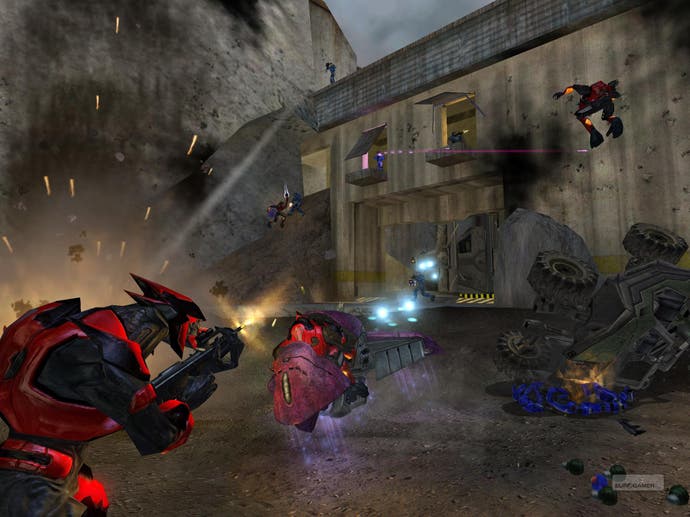
So, the painful process of scaling back Bungie's soaring ambitions began - and painful is certainly the word. Rapidly approaching a year before launch, the team had no engine, environments that couldn't possibly work in any engine, features that were only half-implemented, a sprawling story that would eventually require two full-sized games to tell and a complex multiplayer mode that would simply have to be scrapped.
The following year would be the toughest time many of the Bungie staff had experienced in their careers. "I had a log that I kept," says Butcher, "of the times I went into work and the times I left work. Day after day after day, seven days a week, getting in reasonably early and then not leaving before 11 at night. Seven days a week, for months and months..."
"It was the most brutal development effort we've gone through," says Carney. "We're so much more organised and focused now - mainly because some of us think back to that experience, the lack of daylight, the poor hygiene... These are things we just don't want to happen again!"
"One of the things I always say when people talk about crunch now, is that the crunch we do now is the good kind of crunch," adds Butcher. "It's the crunch where you're putting in the hours because you really want to, because you know it's going to make the game better. The crunch on Halo 2 was, 'Oh my god, we're f***ed. We're all going to die.' Months and months of that emotional, negative tone was really hard to deal with - but at the same time, we did a lot of awesome work."
Again, to an outside observer, this seems incredible. How could a long-established studio, with the backing of the world's biggest software company, making a sequel to one of the most critically acclaimed games in history, have presided over such a disaster?
"It happened on Halo 1 as well," admits Butcher. "Of the 25 planned missions for Halo, we shipped 10. Part of the problem is that as team size grows, all the really informal, seat-of-your-pants stuff you've been doing just doesn't work. On Halo 2, we had not levelled up as an organisation enough to be able to even comprehend that that could be a problem, let alone try and solve the problem. We were like kids going through a messy adolescence, but with tens of millions of dollars' worth of budget and the whole world looking at us."



